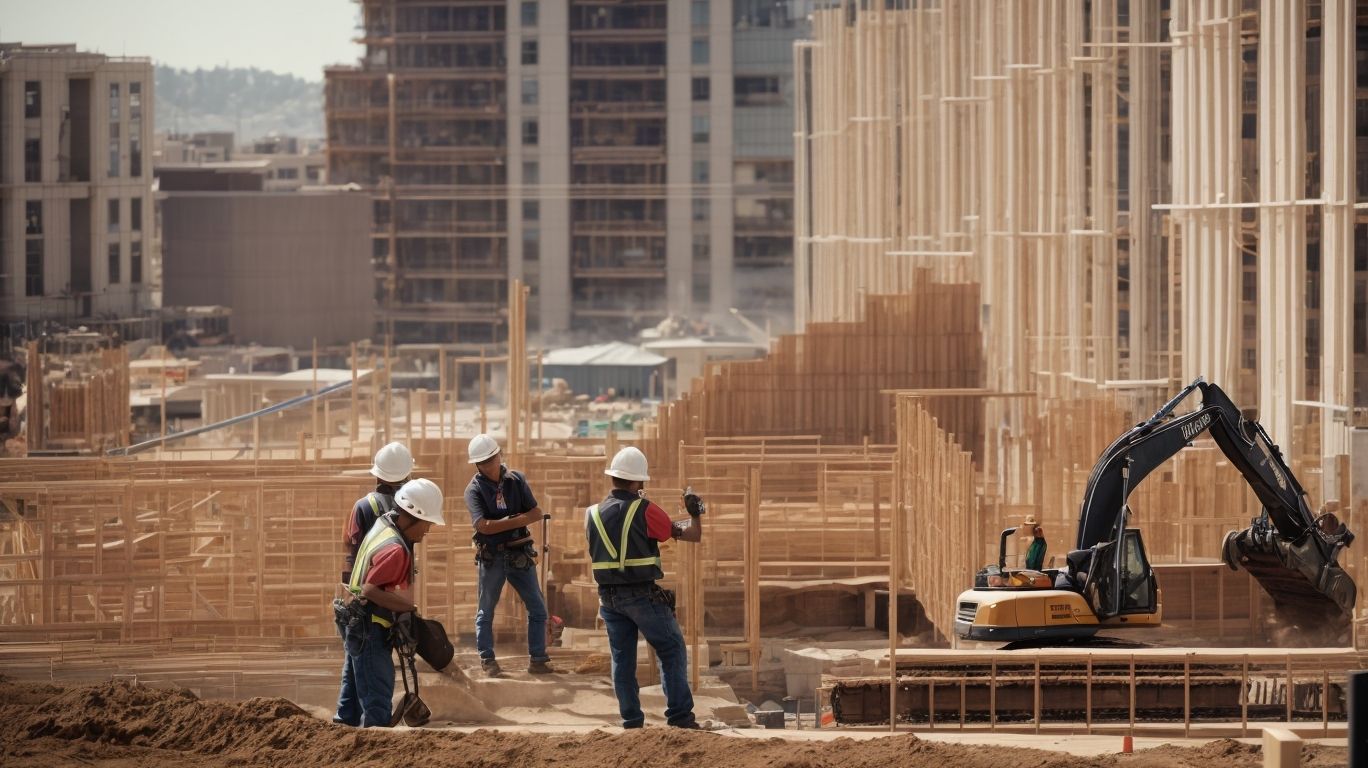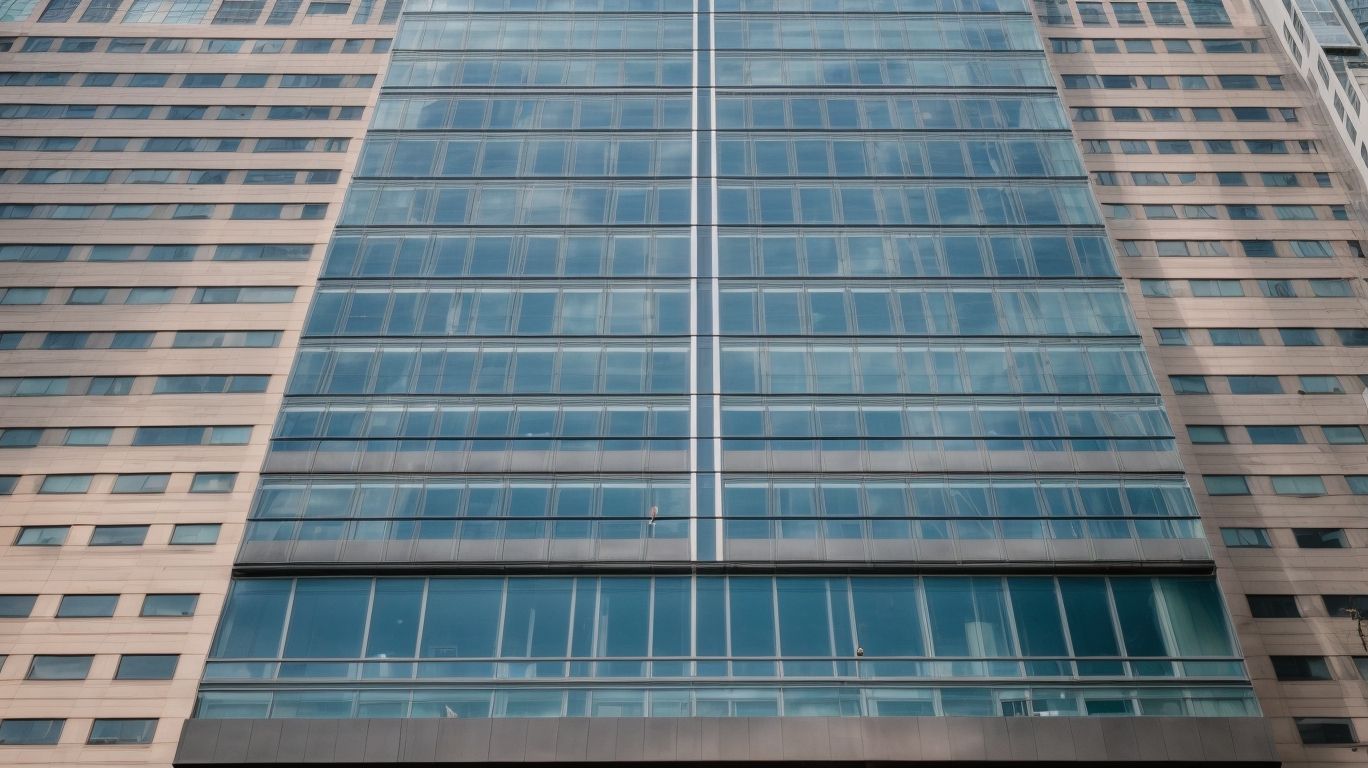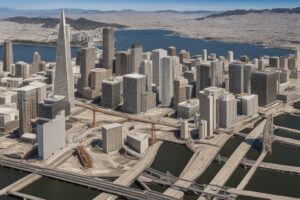
Foundation Engineering in the SF Bay: Building a Durable Base
Foundation engineering is the cornerstone of any construction project, particularly in a region as geologically diverse as the San Francisco Bay Area. From the soil conditions to the unique challenges posed by seismic activity, the type of foundation chosen can make or break a structure’s longevity and stability. In this comprehensive article, we will explore the intricacies of foundation engineering, the importance of choosing the right type of foundation, and the specific factors that must be considered in the SF Bay Area.
From deep to shallow foundations, and everything in between, we will delve into the methods, implementation, and common issues encountered in foundation engineering in this dynamic region. Whether you’re a homeowner, a construction professional, or simply curious about the complexities of building in the Bay Area, this article aims to provide valuable insights into the critical role of foundation engineering in constructing a durable and resilient base for any structure.
What Is Foundation Engineering?
Foundation Engineering plays a crucial role in the construction of durable and resilient structures, providing a solid base for buildings and infrastructure in the SF Bay area.
It involves meticulous geotechnical considerations, such as analyzing soil mechanics to determine the optimal foundation design. Given the seismic activity in the region, ensuring the structural resilience and stability of buildings is imperative. Engineers must assess the bearing capacity of the soil to support the load and prevent settlement over time. By addressing these key aspects, foundation engineering significantly contributes to the safety, longevity, and performance of the built environment in this dynamic and geologically diverse area.
What Are The Different Types Of Foundation?
Foundation engineering encompasses various types of foundation systems, including deep foundations, shallow foundations, and pile foundations, each tailored to specific geotechnical requirements and site conditions.
Deep foundations, such as piles and drilled piers, are employed in areas with deep-seated, load-bearing strata, providing support for structures with substantial vertical loads. On the other hand, shallow foundations spread the load over a larger area, making them ideal for stable soil conditions.
Pile foundations, which can be driven or installed by drilling, offer effective solutions for structures in the San Francisco Bay area, where seismic considerations and soil composition play crucial roles in their design and construction.
Why Is Foundation Engineering Important In The SF Bay Area?
Foundation engineering holds particular significance in the SF Bay area due to its unique geotechnical challenges, seismic activity, soil settlement issues, and the need for high bearing capacity structures to withstand potential earthquakes.
The region’s soil composition, including soft bay mud and fill, presents challenges for building stable foundations. Seismic events can exacerbate these issues, potentially leading to ground failure and settlement risks. As a result, engineers must carefully consider factors such as liquefaction potential and lateral spread to mitigate the impact of earthquakes. Establishing strong bearing capacity becomes imperative to ensure the stability and safety of infrastructure in this dynamic and geologically complex environment.”
What Are The Unique Challenges Of Building In The SF Bay Area?
Building in the SF Bay area presents distinctive challenges related to geotechnical complexities, earthquake vulnerability, soil settlement, bearing capacity requirements, as well as risks of liquefaction, expansive soils, and slope stability issues.
These challenges are intricately linked to the region’s seismic activity and the unique geology of the area. The area’s soil composition and settlement risks, combined with the demands on bearing capacity due to the high seismicity, make construction in the Bay area particularly complex. Liquefaction, a phenomenon where saturated soils behave like liquid during an earthquake, and expansive soils, which undergo significant volume changes with moisture content variations, further add to the challenges.
The region’s hilly terrain also poses slope stability risks, requiring specialized engineering and construction techniques to ensure safety and structural integrity.
What Are The Factors To Consider In Foundation Engineering?
Foundation engineering involves the meticulous consideration of various factors such as building codes, environmental influences, surrounding structures, and geotechnical aspects, particularly crucial in the context of the SF Bay area.
These multifaceted aspects play a critical role in ensuring the stability and safety of structures, especially in a region prone to seismic activity like the SF Bay area. The building codes in this area often require specialized foundation designs to withstand potential ground movements. Environmental impacts, such as soil erosion and liquefaction, necessitate thorough analysis for effective foundation solutions. Neighboring structures present challenges in terms of construction proximity and potential interactions. Geotechnical elements, including soil composition and bearing capacity, are fundamental in determining the appropriate foundation type for the unique geological conditions of this region.
Soil Conditions
Soil conditions form a critical consideration in foundation engineering, requiring comprehensive understanding through geotechnical investigation, soil testing, and analysis of soil properties, often involving geophysical exploration for comprehensive assessments.
These geotechnical investigations play a pivotal role in determining the bearing capacity, settlement characteristics, and potential for soil liquefaction or expansive soil behavior, which are crucial factors in the design and construction of foundations.
Soil testing methodologies, including standard penetration tests and cone penetration tests, provide valuable data on soil composition, density, and strength, guiding engineers in selecting suitable foundation types and construction techniques. The analysis of soil properties, such as moisture content, permeability, and compressibility, enables the assessment of potential foundation distress and deformation, facilitating the implementation of effective mitigation measures.
Building Codes And Regulations
Compliance with building codes and regulations is paramount in foundation engineering, necessitating thorough geotechnical investigations and adherence to regulatory standards to ensure structural integrity and safety.
These codes and regulations serve as crucial guidelines for ensuring that the design, construction, and maintenance of foundations meet the set safety and quality standards. The proper implementation of these regulations helps prevent structural failures and minimize the risk of hazards, ultimately safeguarding the well-being of occupants and the longevity of the built environment.
The process begins with comprehensive geotechnical investigations, which provide vital data about soil composition, stability, and other relevant factors, enabling engineers to make informed decisions and design foundations that are tailored to specific site conditions. The strict enforcement of codes and regulations is essential to uphold the integrity of foundation engineering practices, promoting resilience and sustainability in construction projects.
Environmental Factors
Environmental factors such as groundwater levels, subsidence risks, geosynthetic applications, and grading considerations exert substantial influence on foundation engineering, necessitating holistic assessments and mitigation strategies.
Understanding the dynamics of groundwater is crucial in foundation engineering as it can impact soil stability and the overall performance of structures. Subsidence vulnerabilities pose significant challenges, especially in areas with softer soils, requiring proactive measures to prevent structural damage.
The use of geosynthetics has become integral in reinforcing soil structures and enhancing stability, while effective grading practices help in managing surface water runoff and maintaining the integrity of the foundation system.
Surrounding Structures
The interaction with surrounding structures requires meticulous settlement analysis and load testing to ensure that foundation engineering accounts for potential impacts and maintains structural stability without adverse effects on neighboring properties.
Considering the surrounding structures is essential in foundation engineering to assess potential settlement effects and guarantee compatibility with neighboring infrastructures. Load testing requirements play a crucial role in ensuring that the foundation can withstand various loads without compromising its stability.
Maintaining structural stability is imperative to prevent any unintended consequences on adjacent properties. Thus, a thorough evaluation of surrounding structures is vital for the success and longevity of foundation engineering projects.
What Are The Different Methods Of Foundation Engineering?
Foundation engineering encompasses a range of methods, including deep foundations, shallow foundations, and pile foundations, each tailored to specific geotechnical conditions and structural requirements in the context of the SF Bay area.
Deep foundations, such as piles and drilled shafts, are utilized in areas where the soil is not suitable for shallow foundations, providing strong support for high-rise buildings and bridges.
Shallow foundations, including spread footings and mat foundations, are commonly used for smaller structures on stable soil.
Pile foundations, commonly employed in waterfront areas, offer reliable support for structures subjected to lateral forces or seismic activity. Each method plays a crucial role in ensuring the stability and safety of structures in the dynamic geological landscape of the SF Bay area.
Deep Foundation
Deep foundation methods involve extensive geotechnical investigation and rigorous load testing to support structures on deeper strata, ensuring stability and load-bearing capacity in challenging soil conditions.
These methods are crucial for construction projects where surface soils are unable to bear the load. Geotechnical investigations delve into the characteristics of the subsurface layers, providing vital information for determining the most suitable foundation type and design.
Load testing procedures, such as static load tests or dynamic load tests, ascertain the foundation’s performance under stress, ensuring that it meets the required safety standards for withstanding vertical and lateral loads. This comprehensive approach is fundamental in ensuring the structural integrity and longevity of buildings and infrastructure.
Shallow Foundation
Shallow foundation techniques focus on managing bearing pressure and settlement control to provide stable support for structures on relatively shallow soil layers, ensuring long-term structural integrity and performance.
These techniques are essential for distributing the structural load effectively over the underlying soil, preventing excessive settlement and mitigating potential risks. By carefully considering factors such as soil type, groundwater conditions, and the structural requirements, engineers can tailor the foundation design to optimize bearing capacity and minimize settlement.
Incorporating measures like reinforced footings, geogrids, or ground improvement techniques further enhances the foundation’s performance and longevity, ensuring the stability of the entire structure over time.
Pile Foundation
Pile foundation systems rely on load testing and soil stabilization measures to provide secure structural support by transferring loads through piles into stable strata, ensuring durability and resilience of constructed facilities.
Load testing plays a critical role in verifying the load-bearing capacity of pile foundations, ensuring their ability to withstand the expected loads. Soil stabilization techniques such as grouting and jet grouting help enhance the soil’s strength and reduce settlement, further fortifying the foundation system. By integrating these principles and applications, engineers can ensure the longevity and stability of constructed facilities, safeguarding them against potential structural issues and enhancing their overall resilience.
How Is Foundation Engineering Implemented In The SF Bay Area?
Foundation engineering implementation in the SF Bay area involves comprehensive soil testing, rigorous structural analysis, and meticulous design and construction processes to address the region’s geotechnical complexities and seismic vulnerabilities.
These approaches are vital to ensure the safety and longevity of structures built in the area. Soil testing relies on advanced methods such as cone penetration testing and geophysical techniques to evaluate the ground conditions. Structural analysis employs sophisticated software for evaluating the behavior of foundations under various loading conditions and seismic events. The design and construction processes integrate innovative solutions to mitigate the effects of soil liquefaction and ensure the resilience of foundations in the face of potential seismic activity.
Soil Testing
Soil testing forms the cornerstone of foundation engineering implementation, involving geotechnical investigation and, at times, geophysical exploration to comprehensively understand soil conditions and inform structural design and construction decisions.
These investigations provide valuable insights into soil properties, such as density, moisture content, and strength, which are critical for determining the appropriate foundation type and design parameters. Geophysical exploration techniques, including seismic surveys and ground-penetrating radar, help in mapping subsurface conditions and identifying potential hazards, such as underground voids or soft zones. The data obtained from these investigations is vital for ensuring the stability and durability of structures, mitigating risks, and optimizing construction costs. Ultimately, soil testing plays a pivotal role in ensuring the safety and performance of infrastructure projects.
Structural Analysis
Structural analysis plays a pivotal role in foundation engineering implementation, focusing on evaluating bearing capacity and settlement analysis to ensure structural soundness and stability in the SF Bay area’s demanding geotechnical context.
This involves the in-depth assessment of soil properties, such as strength and compressibility, to determine the load-bearing capabilities of the foundation. Settlement analysis methodologies play a crucial role in predicting and managing potential ground movements, ensuring long-term stability. By integrating advanced technologies like Finite Element Analysis (FEA) and considering environmental factors, engineers can effectively mitigate risks and optimize the design for the unique challenges posed by the SF Bay area’s geological characteristics.
Design And Construction
The design and construction phases of foundation engineering implementation involve rigorous quality assurance measures and meticulous risk management to ensure the structural integrity and resilience of built facilities in the SF Bay area.
An essential aspect of foundation engineering is the consideration of soil properties, water table levels, and seismic activity to determine appropriate design and construction techniques. Quality assurance protocols encompass material testing, structural analysis, and adherence to industry standards for durability and safety. Concurrently, risk management strategies involve assessing potential hazards, implementing contingency plans, and monitoring environmental impacts on the foundation’s stability. These measures play a crucial role in safeguarding against structural failure and ensuring long-term sustainability of the built environment.
What Are The Common Issues In Foundation Engineering In The SF Bay Area?
Foundation engineering in the SF Bay area encounters common issues related to liquefaction risks, seismic activity impacts, challenges with expansive soils, and slope stability concerns, necessitating specialized engineering solutions for sustainable construction.
These challenges are due to the Bay area’s geological characteristics, particularly its susceptibility to liquefaction during seismic events. Liquefaction can significantly undermine the stability of foundations, leading to potential damage to structures. The region’s expansive soils pose challenges as they can undergo significant volume changes, leading to foundation movement. The steep slopes in certain areas further complicate construction, requiring innovative stabilization techniques to ensure the long-term integrity of structures.
Liquefaction
Liquefaction poses a significant challenge in foundation engineering, requiring thorough settlement analysis and effective soil stabilization measures to mitigate its adverse effects and ensure the longevity of constructed structures in the SF Bay area.
This geological process, often triggered by seismic activity, can lead to a dramatic decrease in soil strength, resulting in potential settlement and structural instability. Engineers must conduct detailed settlement analysis to evaluate the anticipated ground movements and their impact on the foundations.
Soil stabilization techniques such as deep compaction, jet grouting, and soil mixing play a crucial role in enhancing soil strength and preventing liquefaction-induced damage. By implementing these measures, engineers can significantly reduce the risks associated with liquefaction and enhance the overall resiliency of the infrastructure.
Seismic Activity
Seismic activity presents a formidable challenge in foundation engineering, necessitating seismic retrofit measures and robust bearing capacity designs to enhance structural resilience and mitigate the impacts of earthquakes in the SF Bay area.
The seismic retrofit requirements for structures are critical for ensuring their ability to withstand seismic forces. By incorporating retrofit measures such as strengthening existing foundations and adding energy dissipation devices, buildings can be better equipped to withstand earthquakes.
Bearing capacity considerations play a crucial role in assessing the ability of a foundation to support the imposed loads during seismic events. Ensuring proper soil analysis and foundation design helps in improving the overall resilience of structures and minimizing the risk of damage. Integrating these considerations into foundation engineering is essential for creating buildings that can better withstand the impact of seismic activity.
Expansive Soils
Dealing with expansive soils poses intricate challenges in foundation engineering, necessitating comprehensive soil testing and profound understanding of soil mechanics to address their expansive nature and potential structural implications in the SF Bay area.
When confronted with expansive soils, it’s crucial to employ effective soil testing methodologies to evaluate their characteristics, such as moisture content and swell potential. Understanding the soil mechanics involved is essential for developing strategies to mitigate the adverse effects of expansive soils on foundations. By integrating geotechnical engineering principles and innovative construction techniques, engineers can proactively address the challenges posed by expansive soils, ensuring the long-term stability and durability of structures in the SF Bay area.
Slope Stability
Maintaining slope stability presents critical concerns in foundation engineering, requiring effective grading and compaction strategies to ensure the stability and durability of structures constructed on sloping terrain in the SF Bay area.
These strategies play a crucial role in managing the potential risks associated with soil erosion, landslides, and structural instability. Proper grading practices help in creating a suitable slope configuration, reducing the risk of soil movement and ensuring proper drainage. Compaction techniques aid in increasing the soil’s density, enhancing its load-bearing capacity and reducing the likelihood of settlement. By integrating these practices into foundation engineering, engineers can mitigate the challenges associated with slope stability and ensure the long-term structural integrity of buildings and infrastructure.




No Comments